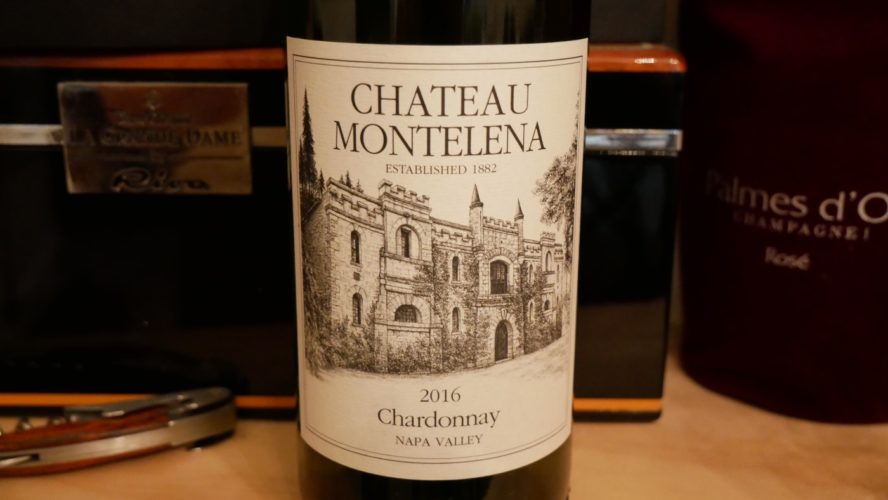By Steve Price
In 1976, British wine merchant and aficionado Steven Spurrier set out to bring attention to his wine school, L’Académie du Vin in Paris, by staging a blind tasting, pitting the best French chardonnays and red wines against the offerings of California – at the time, considered the hinterlands of wine producing regions. Though many considered the entry of California wines a laughingstock when compared to the apparent superiority of wines from Burgundy and Bordeaux, Spurrier’s blind tasting shocked the world when two California wines – the 1973 Chateau Montelena Chardonnay and 1973 Cabernet Sauvignon from Stag’s Leap Cellars – won the competition, upending traditional views of French superiority and establishing Napa Valley as one of the world’s preeminent winegrowing regions.
This seminal event, the 1976 ‘Judgment of Paris’ is the subject of the 2008 comedy-drama Bottle Shock starring the indomitable Alan Rickman as Spurrier, with Bill Pullman and Chris Pine as the father-and-son duo of Jim and Bo Barrett in charge of Chateau Montelena, a sprawling vineyard in California’s Napa Valley located ninety minutes north of San Francisco. In the film, Spurrier’s struggling wine school decides to host the blind tasting after some prodding from his American friend and confidant Maurice (Dennis Farina), sending Spurrier off to California to find contestants to compete against French offerings. From there, we spend time getting to know the Barret family including the firm, hardworking Jim who often finds conflict with his free-wheeling, aloof son Bo.
Much of the film serves to juxtapose the uptight, aristocratic regality of the French scene (ironically represented by the British Spurrier in this case) to the more down-to-earth, rustic vintners in northern California. The film puts a special focus on Bo’s free-spirited nature, being only years removed from the era of free love, peaceniks and Woodstock, as if to embody the very impression of California – and, by proxy, American – wine producers in that era held by the French. This creates a resounding shock for the judges at Spurrier’s tasting of course when the country bumpkin American rustics manage to shock the world by defeating their French counterparts, forever establishing the true value of American viticulture on the world stage.
The independent film is a delightful, breezy watch, minted by the performances of the dearly missed Alan Rickman and Dennis Farina. Filmgoers looking for an excellent film on wine and viticulture specifically would be hard-pressed to find a better offering; the film does an admirable job explaining the dedication that the vintner or vigneron must possess to the soil to turn around and produce the perfect grape for cultivation. Perhaps even more fascinating than the human element of the film was the spotlight placed upon the art of viticulture itself, creating a unique symphony of facets that complete the multilayered whole.
For some, the process is philosophical, inspiring them to view the work of growing grapes as a personal struggle against one’s own mental fortitude; just as the cultivator keeps the vine from absorbing too much water, thus forcing it to strain to grow and thus create a higher quality yield, so too must they themselves strain mentally and physically to produce their handiwork. For others, the process is poetic in nature, cultivating within the vintner a romantic view of viticulture as a breathtaking form of art whose splendor satiates both the eyes, the palate, and the soil to which they work; only through that bond, through the sweat of one’s brow and their fingers in the rich soil can transformative growth take place.
This commixture of beliefs elevates viticulture from a mere agricultural pastime to a booming industry in the United States. The American marketplace accounted for $78 Billion USD in sales for both domestic and imported wine in 2021, up over $10 Billion from the previous year. California alone accounts for 85% of all wine being produced in the United States currently, but up-and-coming regions in Oregon, Washington, and even North Carolina are beginning to cultivate their own winegrowing regions of renown. More than simple numbers however, the growth of the American wine industry reflects a passion for the culture.
From the growth of the vines in the vineyards to the ambiance of a candlelit restaurant, the creation process behind our favorite wines has been romanticized in art and film to the point where the experience takes on a near-mythical status. Sommeliers train their palates for years in order to properly taste test the finest bottles, and some of the rarest vintages sell for thousands upon thousands of dollars. Yet there is also something uniquely simple and deeply personal about wine that Bottle Shock captures so eloquently. Wine is not merely for the upper crust of society, the well-to-doers, but for anyone with a desire to learn and embrace the magic.
No one expected the Americans to place favorably during the Judgment of Paris, let alone win the competition outright, but therein lies the charm of both the film and wine culture in general: its accessibility to everyone. You need not be a person of deep pockets or affluent means to enjoy a decadent wine, nor do you need years of experience to begin your journey into the culture. The American wine scene is a perfect place to begin your journey into the study of viticulture and winemaking with so many wonderful options to choose from and so many wonderful wine-producing regions to explore.
As a coda to the 1976 Judgment of Paris tasting event, Spurrier decided to hold a thirtieth anniversary tasting in Paris to see if the results were to be replicated, or if the French wines would reclaim their place as the preeminent examples of the craft. Once more, the wines produced in California claimed the victory in the competition.




